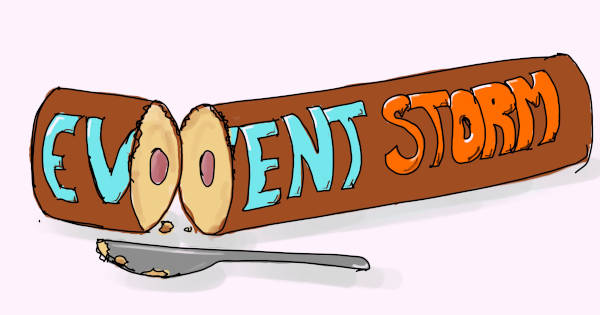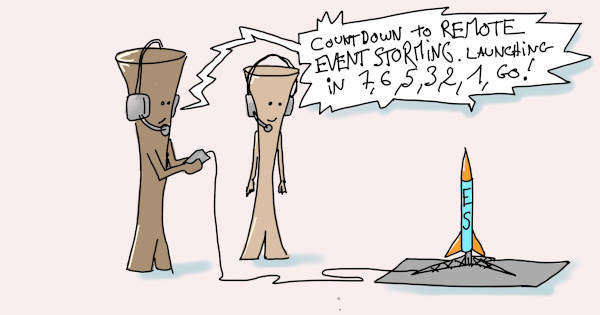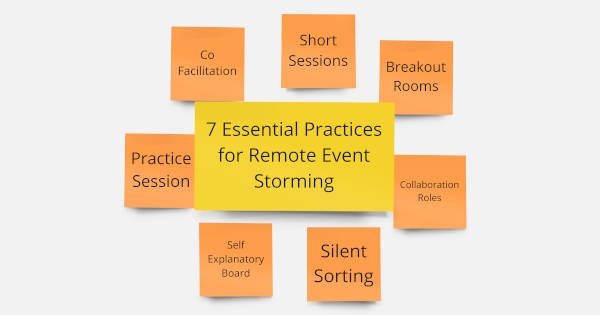5 ingredients to prepare before starting an Event Storming the Flow
Event Storming the flow workshop requires 5 main ingredients in the recipe. Read this blog and get ready to cook!

In the previous post, you answered 3 questions to know if Event Storming the Flow could help you. You know the challenge that you are going to explore:
- is not only due to a lack of skills
- persists despite the effort already put into solving it
- does not have an obvious solution.
Let’s get prepared for the workshop with these 5 ingredients:
1st ingredient: a flow
What is the flow that you will be looking at during the workshop? In other words, in which flow is the challenge embedded?
A flow consists of a succession of activities linked one to another (think of an assembly line). Most of the work we do is part of a flow. In software development, this flow often includes design, test, development, and build activities.
The answer to the previous question goes like this: “the flow that we will be looknig at starts from the moment when… till…”.
2nd ingredient: the right attendees

You want to invite:
- the people who do the work in the flow that you identified in the previous question
- the people for whom the problem is painful
- the people who are volunteering to attend such a session. It means that they want to contribute to removing the problem.
You want to avoid: forcing people forced into the workshop for a problem that they don’t feel concerned about.
You also want to limit attendance to a decent number of people (10 is already a lot!).
3rd ingredient: a workshop intent

What would the participants like to achieve with this workshop? Define this intent with as many attendees as possible.
Ask them to answer questions such as: “What is the intent of this workshop? What do you want to achieve at the end of this workshop? How will you know that you achieved this result?”
Unprecise intents such as “engaging people” or “improving collaboration” are worth further questioning.
An intent is like a lighthouse for the workshop. It is necessary to know where to go. It needs to be precise enough to focus. And it needs to be flexible enough to be reached from any starting point. E.g.: “adapt the way we are working together so we have fewer late detections of bugs that provoke rework”.
It’s best when the intent somehow relates to the problem to solve.
4th ingredient: an introduction of Event Storming the Flow in a few words
Let’s be honest, the name of the technique - event storming the flow - is not self-explanatory.
Yet, there is nothing complex about the technique. You can explain it in a few words:
- during a 15min video call or
- in a wiki page with examples or
- in a short email.
Here is an example of the latter:
Welcome!
You are invited to a workshop called “Event storming the flow”.
What is event storming the flow?
- It is a visualization technique that has been used in the company on several occasions.
- It aims at creating an aligned understanding of a workflow.
- Once the alignment obtained, the technique allows the improvement of the workflow. For example: how to remove priority blockers? What are the sources of rework? When to take better decisions in our flow?
What is going to happen during this workshop?
This is a collective workshop, as the list of recipients of this email indicates. We’ll use plenty of post-its and follow some simple guidelines to visualize your workflow on a wall. To do this, you will select a real use case that is representative of what usually happens for this workflow. Then, based on this visualization, you will identify:
- patterns you wish to remove from this workflow,
- levers on which to act to drive the desired change,
- and actions to perform.
This is not one of these boring workshops. You will be actively contributing most of the time!
You can also:
- add information about the timing, duration, and the number of sessions,
- provide details about the use case (5th ingredient) or the workshop intent (3rd ingredient),
- share a link to some posts from this blog! Your goal is to convert a name (event storming the flow) into an attractive promise for attendees.
5th ingredient: a real use case
The participants will bring a real use case as a starting point to describe the flow.
Ask them for a recent feature or situation. It needs to be representative of what usually happens in the workflow.
Using a real-life situation is key to:
- prevent theoretical discussion about an imaginary situation
- engage the participants who can discuss a use case they know
- identify a bounded scope for the workshop
- check that you have the right list of participants to cover this scope
Having the use case before starting the workshop is not a must. Still, it is a good way to check the alignment of the participants.
It’s a good sign when several people identify one. Otherwise, it is an opportunity to take a step back and go back to the intent of the workshop again (3rd ingredient).
To be continued
If you follow these steps, your Event Storming the flow session is already on a good track! In the next post, we’ll see how to prepare the room for a successful session.
This blog post is part of the 1h Event Storming book that we are currently writing.




Leave a comment